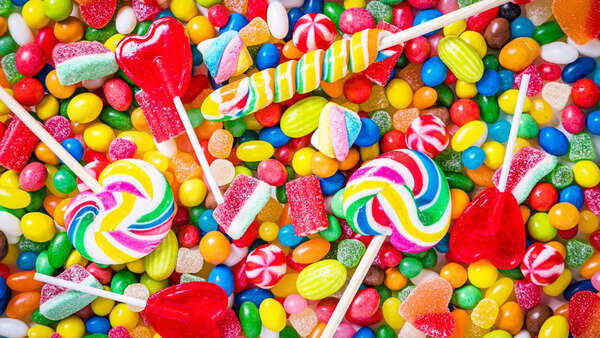While reading food labels is a good start, it may not be enough to protect you from potentially harmful ingredients lurking in everyday foods. Many seemingly harmless store-bought items contain hidden additives that can negatively impact your well-being. Let's explore some common culprits:

Food dyes are ubiquitous, adding vibrant hues to everything from candies to flavored rice. However, these synthetic colors may come at a significant cost. Artificial food dyes like Red 40 and Yellow 5 have been linked to neurobehavioral issues, particularly hyperactivity in children. The FDA recently banned Red No. 3 due to its association with cancer, but it remains in use in many countries.

Titanium dioxide is a chemical used to whiten various foods, including coffee creamers, candies, sunscreen, and toothpaste. Classified as a Group 2B carcinogen, the nanoparticles in titanium dioxide may trigger inflammation and oxidative stress.
Brominated vegetable oil (BVO) acts as an emulsifier in citrus-flavored drinks, preventing flavor oils from separating. However, studies suggest a link between BVO and neurological problems, thyroid dysfunction, and damage to the heart and liver. While banned in Europe and the US, it remains in use in other regions.

Potassium bromate strengthens dough in bread-making, but the World Health Organization classifies it as a possible human carcinogen. Banned in Europe, Canada, and other regions, potassium bromate is a nephrotoxin in both animals and humans and has been linked to kidney and thyroid tumors in animals.

High fructose corn syrup (HFCS), a common sweetener in sodas and snacks, is a leading contributor to obesity and diabetes. Studies indicate that HFCS disrupts metabolism, increasing fat storage and insulin resistance. This ingredient is prevalent in sugary beverages and processed foods.
Newer articles
Older articles
 SA20 Auction: Teams Given Green Light to Retain Six Players Amidst Increased Salary Cap and New RTM Card
SA20 Auction: Teams Given Green Light to Retain Six Players Amidst Increased Salary Cap and New RTM Card
 India's Harshit Rana Released from Squad Before Second Test Against England in Birmingham
India's Harshit Rana Released from Squad Before Second Test Against England in Birmingham
 Udaipur: India's "City of Lakes" Beckons with Palaces and Timeless Romance
Udaipur: India's "City of Lakes" Beckons with Palaces and Timeless Romance
 Nitish Rana Poised for Delhi Comeback After Disappointing Uttar Pradesh Stint
Nitish Rana Poised for Delhi Comeback After Disappointing Uttar Pradesh Stint
 Former Selector Blasts India's Fielding Blunders After Test Loss to England
Former Selector Blasts India's Fielding Blunders After Test Loss to England
 Anushka Sharma Faces Ageist Criticism at Wimbledon, Fans Launch Online Defense
Anushka Sharma Faces Ageist Criticism at Wimbledon, Fans Launch Online Defense
 Gambhir Defends India's Tailenders After Headingley Collapse, Cites Dropped Catches as Key Factor
Gambhir Defends India's Tailenders After Headingley Collapse, Cites Dropped Catches as Key Factor
 Gavaskar Calls for Kuldeep Yadav's Inclusion, Questions Bumrah's Fitness Ahead of Second Test Against England
Gavaskar Calls for Kuldeep Yadav's Inclusion, Questions Bumrah's Fitness Ahead of Second Test Against England
 Asia Cup 2025: ACC Eyes Mid-September Start Date Amid Easing Tensions
Asia Cup 2025: ACC Eyes Mid-September Start Date Amid Easing Tensions
 Green tea vs lemon water for glowing skin: Myths, benefits, and expert-backed skincare secrets
Green tea vs lemon water for glowing skin: Myths, benefits, and expert-backed skincare secrets